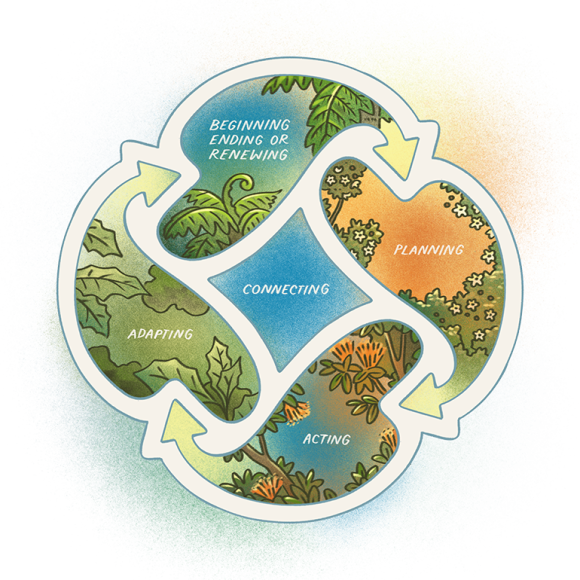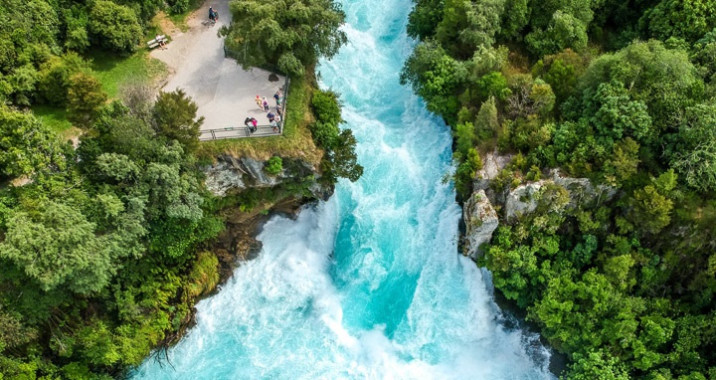Designing transition processes | Te waihanga hātepe whakawhitinga
How people organise their work together can be structured in different ways, reflecting the diverse contexts in which transitions arise.
On this page
Any decision-making cycle needs a process that brings people together to make it happen, and collaboration can be structured in many ways.
Regardless of the complexity faced, decision-making can be divided into 3 basic stages:
- Planning
- Acting
- Adapting
Each stage involves smaller steps you can use to focus your work and progress towards concrete outcomes.
Here is a basic decision-making cycle that could be adapted for your transition:

Text description of the basic decision-making cycle diagram
The rest of the guide will be organised around the steps in this decision-making cycle. While the steps are presented in sequence, the process of decision-making is not likely to be linear or predictable. At times it may be necessary to go backwards to move forward.
Some other decision-making processes that might work for you are:
Developing our new systemic design framework(external link) — Design Council
Constellation model of collaborative governance(external link) — Centre for Social Innovation
The partnering toolbook(external link) — The Partnering Initiative
Brokering better partnerships [PDF 2.3 MB](external link) — Partnership Brokers Association
Collective impact process(external link) — Impact Collective
Critical Tiriti analysis(external link) — Community Research
He Pikorua in action(external link) — Ministry of Education
Each model highlights lessons and solutions that have come up in different settings that the transition designers have worked through.
Designing a process to transform Lake Taupō (Waikato)
In 2001 Waikato Regional Council began a process to protect the water quality in Lake Taupō from increasing concentrations of nitrogen, mainly from farms. At the time there was no precedent in Aotearoa New Zealand for a process that would place such strong limits on how people used their land.
This project laid a strong foundation for just transitions:
- A change agent within the council worked to unite the views of landowners, iwi tribes and government.
- All talks began simply: “The problem is in the lake; the solution lies on the land.”
- Space was made for community learning, then moved on to adaptive decisions, monitoring and evaluation.
- Hurt and burden were acknowledged in decision-making.
- Priority was given to Ngāti Tūwharetoa as mana whenua.
- Every step worked to reduce future uncertainty.
- Rules were made, with flexibility and innovation built in.
- The resulting cap-and-trade system reflected the focus on transparency and fairness.
Successes included funding from central, regional and local governments to support land-use change, halting the water quality decline of the lake and maintaining sport fisheries and tourism. New brands, Taupō Beef and Lakeman Beer, were created to capture value generated from the narrative of saving a large lake.
Protecting Lake Taupō: The strategy and the lessons — Susan Yerex [PDF 7.66 MB](external link) — Waikato Regional Council

Photo: Taupō District Council

